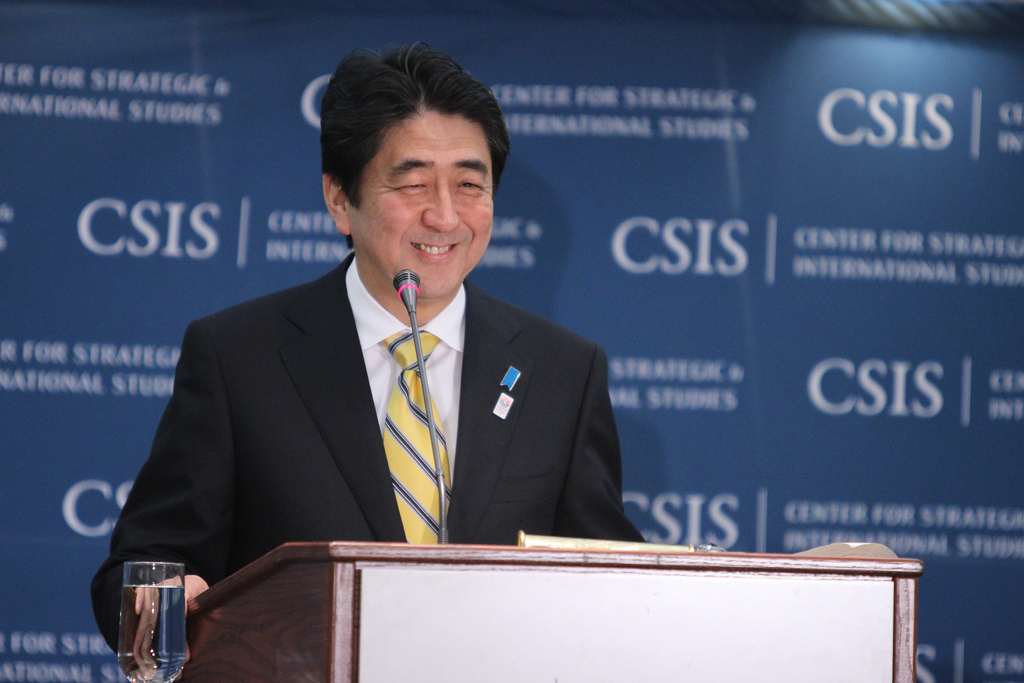by Garrett Dee
語言:
English
Photo Credit: Gage Skidmore/Flickr/CC
WITH THE SIGNING of Trump’s executive order regarding the United States’s withdrawal from Trans-Pacific Partnership (TPP) negotiations, US president Donald Trump brought an end to US involvement in the controversial trade deal that would have opened markets between the US and many countries in the Asia Pacific,with the notable exception of China. Though the TPP had been the economic cornerstone of President Obama’s Asia Pacific policy, it had been met with intense opposition from across the political spectrum both within the US as well as amongst the other eleven nations involved in the negotiation. With the future of the pact in question following US withdrawal, we might take a look at the geopolitical vacuum left by the absence of a strong US-led trade framework and the possibility for China to consolidate its own regional power by picking up the slack.
The Obama administration’s much-vaunted “Rebalance to Asia” policy ended up bearing little fruit over the course of Obama’s tenure, and though the administration seemed to pin much of its hope on the successful negotiation of the TPP, in the end it was bogged down in complications such as opposition to lower quality standards and threats to American jobs. In fact, even Hillary Clinton, originally a supporter of the deal, backed down from her support while on the campaign trail, which means that the deal would not have passed regardless of the outcome of the election.
As Taiwan is shut out of many of the free trade agreements otherwise accessible to other countries in the region due to political complications, President Tsai Ing-wen expressed her desire to have Taiwan included in the trade partnership and has heavily advocated for assenting to the pact. Given that Tsai has placed a good deal of emphasis on diversifying Taiwanese economic partnerships, membership in the TPP—as it stood when the United States was still actively involved in the negotiations—meaning a trade zone potentially encompassing 40% of global GDP and 20% of global trade which seemed critical to the growth of the Taiwanese economy.
However, the trade deal was not met with open arms among many in Taiwan, who feared that the lowering of regulations regarding product quality would expose Taiwanese consumers to harm. Arguments were particularly contentious around the issue of the importation of American pork containing the growth hormone ractopamine, legal in the US but considered dangerous by the Taiwanese pork industry. The issue was a major political debate, with the KMT accusing Tsai and the TPP of endangering Taiwanese consumers in order to advance their own economic agenda. Additionally, the KMT took the opportunity to accuse supporters of the deal who had previously criticized the KMT-driven Chinese trade pacts during the Sunflower Movement of hypocrisy, citing that the TPP negotiations were just as opaque and laden with special interests negotiated through the use of black box politics, dramatically expanding the powers of multinational corporations to circumvent national regulations.
Thus, trade balance in the region seems poised to shift dramatically in the wake of Trump’s election and his immediate withdrawal of the United States from the negotiation of the TPP. China already occupies the preponderant economic position in the region, and a trade vacuum left by the aborted TPP has the potential to be imminently filled in by a Chinese plan. China has already been negotiating the creation of its own trade zone in the Asia Pacific, the Regional Comprehensive Economic Partnership (RCEP), which has often been described as its own alternative to the US-led TPP. If approved, the trade zone will encompass 46% of the global population and 24% of the global GDP, and would encompass virtually all of the countries in the region.
Notably, many of the countries who were involved in the negotiation of the TPP and are traditionally considered staunch allies of the US like Japan and Australia are also involved in the negotiation of the RCEP. There is always a geopolitical aspect to such trade agreements given the economic benefits shared amongst countries who enter into them, particularly for those powerful enough to influence the outcome of the final arrangements. That the aborted TPP is considered US-led while the still viable RCEP is considered to be China-led and has so many countries willing to join shows how quickly countries are willing to shelve lofty political ideals when faced with the harsh prospect of stagnating growth rates.
 Shinzo Abe. Photo credit: Ajswab
Shinzo Abe. Photo credit: Ajswab
It seems that economic imperatives and the opportunities for growth will supersede traditional political alliances, and that countries formerly reliant on the US to bankroll their economies will have no qualms about turning to China for alternative sources of growth. Prime Minister Shinzo Abe said as much when announcing to the Japanese parliament that his country would shift focus to a China-led trade deal were the TPP to stall. This was previously seen as well in the debacle over the foundation of the China-led Asia Infrastructure Investment Bank. The United States publicly requested that its allies such as the UK and France not join the AIIB as founding members, seen as China’s alternative to the IMF and World Bank, but was ultimately rebuffed when the countries joined the organization in defiance of the US government’s request. Taiwan also attempted to join the organization as a founding member during the Ma administration, but was rejected.
In fact, during the 2016 Taiwanese presidential election cycle, Tsai stated during a televised debate that she supported Taiwan joining the RCEP in addition to the TPP. This surprised a section of the voters, as it was seen at the time that Tsai and the DPP were riding anti-China sentiments in the wake of the Sunflower Movement and were therefore intent on reversing the direction that President Ma and the KMT had taken towards a more China-favorable economic program. Indeed, it was exactly the intent of the Sunflower Movement to oppose the black box politics that had been steadily expanding trade relations between Taiwan and China. Though certainly not as outright pro-China as its predecessor administration, this may hint at the DPP’s understanding of the central importance issues of economic growth play in elections.
Given what seems to be a looming protectionist economic trend on the horizon for the US, it is unlikely that Trump is going to be willing to step in with an alternative to the TPP that will give Taiwan a wider breadth of choices in its future trade relations, and therein lies a political problem not only for Taiwan, but one which is also shared by the region as a whole. As the United States becomes more protectionist economically, choosing to go against globalization trends in an effort to roll back what Trump has seen as trade and currency policies that have put the US domestic economy at a disadvantage, China is the most natural choice to make up for the lost trade opportunity. However, many countries in the Asia Pacific region have substantial territorial and security concerns with China, therefore potentially risking compromising other national interests if they decide to seek membership in economic organizations spearheaded by the Chinese. Much in the same way that China rescinded its economic sanctions of the Philippines after Filipino president Rodrigo Duterte’s announcement that he would ally his country with China politically, it is likewise easy to envision a scenario in which China uses its considerable economic power to entice countries like Japan to recognize its disputed maritime claims in the East and South China Seas or face threats of economic difficulties.
Nowhere is this sort of tactic more viable for China than in regards to Taiwan. As mentioned above, Tsai and the DPP owe their current holding of the government mandate in part to the strong opposition in Taiwanese civil society to further trade agreements with China, in fear that this would eventually lead to increased vulnerability to political machination. Given the hopes that Tsai was pinning on ascension to the TPP as a way to move out of China’s economic sphere, it is likely that the DPP is now undergoing some serious hand-wringing over how to jumpstart the Taiwanese economy without compromising its cross-strait policy in the wake of Trump’s decision.
As too often has been the trend in the discourse surrounding Taiwan, however, to say that Taiwan must now inevitably surrender political determination in favor of continued economic growth is to remove agency from Taiwan itself in determining its own future. Undoubtedly, Taiwan finds itself in a less-than-ideal position if the United States decides to isolate itself economically or, even worse, initiate a trade war in the Asia Pacific. This is not a foregone conclusion, however, and it is unlikely that the United States is going to completely abandon its trade investiture with China given the sheer bulk of the trade volume between the two nations and the opposition the subsequent slowdown in economic growth such a move would likely engender.
Instead, it is more likely that in place of the multilateral TPP the US will seek to leverage trade policies bilaterally to renegotiate its position with its trade partners in the region, including China. Trump has already hinted as such in his comments that he would be willing to consider bringing the United States’ stance on the “One China Policy” to the bargaining table if China is willing to renegotiate its position on trade. This is assuming that Trump’s policies will follow a rational line, which his often unpredictable nature does not obviate, but given the massive amount of trade that occurs between the US and China, it is unlikely that he will completely abandon the relationship and more likely that he will seek to strong-arm China into restructuring it. It is less obvious, however, as to whether the Trump administration’s future plans contain a plan for the economic vitality of an independent Taiwan.
 Tsai Ing-Wen. Photo credit: Presidential Office
Tsai Ing-Wen. Photo credit: Presidential Office
Thus, it behooves Taiwan to face its status vis-a-vis the US in a clear-eyed manner with no pretense that unwavering US support will sustain its position indefinitely. The Taiwanese economy does not lack the capacity to expand, as it already comprises world class industries and a highly-educated population. Rather, the greatest hindrance to the task of expansion lies in Taiwan’s continued international isolation under the sustained weight of Chinese pressure, pressure that the Chinese government had hoped would lead to exactly a situation like the present which would bring about a growing acceptance of the “inevitability” of unification with China based on economic necessity.
Though the DPP campaigned on a platform that promised to take a hard stance against China in the future, it may soon be faced with a choice between economic growth and a firm application of its principles. As it seeks to probe other opportunities for trade growth and expansion in the wake of the now almost assuredly defunct TPP, the government may need to brace itself for the possibility that the Taiwanese economy make take a hit in the short term if viable China-free alternatives to the TPP do not materialize. What effect this has on the internal politics of Taiwan remains to be seen.

